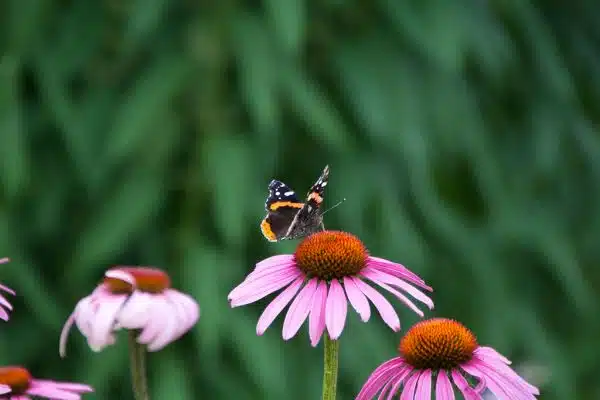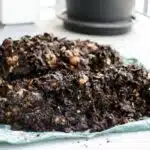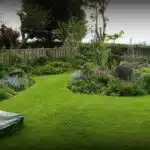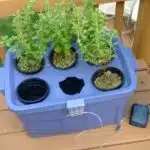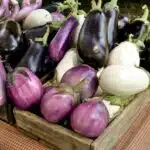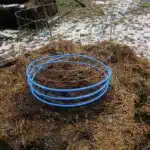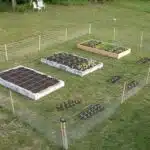Starting a new garden is a rewarding experience that can provide numerous benefits to the gardener and the surrounding environment. From beautifying an outdoor space to providing fresh produce, starting a garden can be a fulfilling activity for anyone willing to put in the time and effort. However, creating a successful garden requires careful planning and attention to detail.
Before beginning any gardening project, it is important to first assess the site and determine the best location for planting. Factors such as sunlight exposure, soil quality, and drainage must be considered in order to create an optimal growing environment for plants. Additionally, selecting appropriate plant species that are well-suited for the local climate and growing conditions is essential for a thriving garden. By following these steps and taking into account other important considerations like water management and pest control, novice gardeners can set themselves up for success in cultivating a beautiful and bountiful garden.
Assessing Your Site For Optimal Growing Conditions
Before starting a new garden, it is essential to assess your site’s growing conditions. The first step in this process is conducting a soil test. Soil testing will provide you with valuable information about the pH level, nutrient content, and texture of your soil. Based on the results, you can determine if any amendments are necessary to optimize plant growth. It is recommended that you conduct soil testing at least once every three years to ensure the health of your plants.
Another critical factor to consider when assessing your site’s growing conditions is sun exposure analysis. This involves identifying the amount of sunlight that your potential garden area receives throughout the day. Most fruits and vegetables require at least six hours of direct sunlight per day, while some herbs and leafy greens may tolerate partial shade. Measuring the amount of sunlight can be done by observing your garden area during different times of the day or by using a sun exposure calculator.
In summary, assessing your site’s growing conditions includes conducting a soil test and analyzing sun exposure levels. By performing these evaluations, you will gain insight into what types of plants will thrive in your garden area and what adjustments need to be made for optimal growth. Determining how much sunlight and what type of soil you have available ultimately sets the groundwork for designing a successful garden space with bountiful harvests.
Moving forward with determining your garden’s purpose and design, it is important to consider factors such as space constraints, desired plant varieties, and accessibility needs before breaking ground on any new projects.
Determining Your Garden’s Purpose And Design
As you embark on the journey of starting a new garden, it is important to determine its purpose and design. A garden can serve many functions, from providing fresh produce to enhancing the aesthetic appeal of your property. Whatever your goals may be, defining them clearly will help maximize productivity and ensure that your efforts are focused.
One key consideration when designing your garden is incorporating sustainable practices. This includes selecting plants that are native to your region, using organic fertilizers and pest control methods, and conserving water through efficient irrigation systems. By adopting these practices, you can reduce your environmental impact while also creating a healthy ecosystem for your plants to thrive in.
Overall, taking the time to plan out the purpose and design of your garden will set you up for success down the road. By integrating sustainable practices and maximizing productivity, you can create a beautiful and functional space that serves both you and the environment. In the next section, we will discuss choosing the right garden bed type and size to further optimize your growing potential.
Choosing The Right Garden Bed Type And Size
After determining the purpose and design of your garden, the next step is to choose the right bed type and size that will suit your needs. Raised beds and container gardens are two popular options that provide a lot of benefits for both novice and experienced gardeners.
Raised beds are ideal for those who want to have better control over their soil quality, drainage, and temperature. They can be made from various materials such as wood, metal, or concrete blocks and come in different sizes and shapes to fit any space. Raised beds also make it easier to manage weeds, pests, and diseases as they are elevated off the ground.
Container gardens are perfect for those with limited outdoor space or those who want to add some greenery indoors. They can be placed on balconies, patios, windowsills, or any small area that receives adequate sunlight. Container gardens offer flexibility as you can easily move them around if necessary and change the plants according to your preference.
- Here are four things to consider when choosing between raised beds or container gardens:
- The amount of space you have available
- The type of plants you want to grow
- Your level of gardening experience
- Your budget
Choosing the right bed type and size is crucial in starting a new garden as it affects how your plants will grow and thrive. Whether you opt for raised beds or container gardens, make sure they fit within your landscape design and match your gardening goals.
Transition: Now that you have chosen the best bed type and size for your garden, it’s important to prepare the soil for planting.
Preparing The Soil For Planting
The first step in preparing the soil for planting is to test its quality. A soil test will help determine the pH level, nutrient content, and texture of your garden soil. This information can be used to identify what amendments may be necessary to ensure optimal plant growth and health. Soil testing kits are available at most garden centers and online stores.
Once you have tested your soil, it’s time to start preparing it for planting. Composting is an excellent technique that can improve soil structure and provide essential nutrients for plants. Compost can be made from a variety of materials, including food scraps, leaves, grass clippings, and other organic matter. By adding compost to your garden bed, you’ll increase its organic matter content and improve water retention.
There are several composting techniques that you can use in your garden. One popular method is hot composting, which involves creating a pile of organic matter that heats up as it decomposes. Another option is vermicomposting, which utilizes worms to break down organic matter into nutrient-rich castings. Regardless of the method you choose, incorporating compost into your garden soil will help create a healthy growing environment for plants.
Understanding plant hardiness zones is crucial for selecting appropriate plants for your garden based on temperature extremes in winter or summer climates. This knowledge will enable you to choose plants that are well-suited for the conditions in your area and avoid those that may not thrive due to unfavorable weather patterns or extreme temperatures. By combining proper soil preparation techniques with an understanding of plant hardiness zones, you’ll be well on your way to creating a vibrant and healthy garden space.
Understanding Plant Hardiness Zones
Plant hardiness zones are a critical consideration when starting a new garden. These zones divide the country into regions based on average minimum winter temperatures. Understanding your region’s zone is crucial to selecting plants that will thrive in your garden. For instance, if you live in a region with harsh winters, you’ll want to select plants that can tolerate cold temperatures.
Climate considerations are also essential when working with plant hardiness zones. The amount of rainfall, humidity, and sun exposure your garden receives can impact which plants are suitable. For example, if you live in a region with low rainfall, choose drought-tolerant plants that can survive with minimal watering.
When selecting plants for your garden, it’s important to consider their hardiness zone and climate requirements. You don’t want to waste time and money planting something that isn’t suited for your area. By understanding these factors and doing research beforehand, you can ensure success and enjoy a beautiful, thriving garden year-round. In the next section, we’ll discuss how to select the best plants for your garden based on these criteria.
Selecting The Best Plants For Your Garden
Understanding the plant hardiness zones is crucial for every gardener, as it helps in selecting plants that will thrive best in a particular area. Once you have identified your zone, the next step is to choose the right plants for your garden. Plant selection tips can help you get started on this journey.
Firstly, consider the amount of sunlight and shade available in your garden. Some popular garden plants such as sunflowers, tomatoes, and peppers require full sun exposure of at least six hours daily to grow well. In contrast, other plants like hostas and ferns prefer shady areas. Understanding these requirements can help you decide where to place each plant in your garden.
Secondly, think about the type of soil in your garden and select plants that are suitable for it. For instance, if you have sandy soil that drains water easily, drought-resistant plants like succulents or cacti would be ideal choices. In contrast, if you have clay soil that retains water, go for plants like hydrangeas or irises that tolerate moist conditions well.
Now that you have an understanding of how to choose the right plants for your garden based on sunlight exposure and soil type let’s discuss deciding between seeds and seedlings. While both options have their advantages and disadvantages, buying seedlings is more convenient as they are already established plants with a head start on growth. Seeds offer more variety but require more patience as they take longer to mature into full-grown plants. Ultimately, whichever option you choose depends on personal preference and time constraints.
Deciding Between Seeds And Seedlings
When starting a new garden, the decision between using seeds or seedlings can be a crucial one. There are pros and cons to each option that should be weighed before making a final decision.
Using seeds allows for a wider variety of plants to choose from and often provides better cost savings in the long run. However, it requires more patience and care as the seeds need to be planted at the right time in the right conditions for them to germinate successfully. Seedlings, on the other hand, provide an instant garden and don’t require as much maintenance. However, they come with higher upfront costs and offer less diversity in plant options.
In terms of cost comparison, purchasing seed packets tends to be cheaper than buying seedlings. While it may seem like a larger upfront investment is required for seedlings, they often produce more fruit or flowers faster than seeds would, resulting in a higher yield over time. Ultimately, deciding between seeds and seedlings comes down to personal preference and priorities for your new garden project.
When considering whether to use seeds or seedlings for your new garden project, weigh the pros and cons carefully before making a final decision based on your unique needs. Once you have decided which option is best for you, it’s time to begin planting your garden with some tips that will help ensure success.
Planting Your Garden: Tips For Success
Research has shown that companion planting can increase yields and improve the overall health of your garden plants. Companion planting involves pairing certain plants together that have a mutually beneficial relationship, such as marigolds planted with tomatoes to repel pests. Additionally, crop rotation is an effective method to prevent soil-borne diseases and nutrient depletion. This involves changing the location of crops each season to ensure that different nutrients are being utilized by the plants.
When it comes to planting your garden, it’s important to consider the spacing and depth requirements of each plant species. Overcrowding can lead to stunted growth and decreased yields, while improper planting depths can cause root damage or rot. Be sure to read up on each plant’s specific needs before placing them in the ground.
Overall, successful gardening requires thoughtful planning and attention to detail. Incorporating methods such as companion planting and crop rotation can go a long way in improving the health and productivity of your garden. In the next section, we will discuss another crucial aspect of gardening – watering your plants for optimal growth.
Watering Your Garden For Optimal Growth
Having successfully planted your garden, it is important to ensure that your plants receive the proper amount of water for optimal growth. One way to ensure this is by setting up a watering schedule tailored to the specific needs of each plant. This can be done by researching the individual water requirements for each type of plant and creating a schedule that takes into account factors such as rainfall, soil type, and temperature.
Another option for efficient watering is installing drip irrigation systems. These systems deliver water directly to the roots of plants in a slow and steady manner, preventing excess water from evaporating or running off. Drip irrigation also reduces the risk of fungal diseases caused by overwatering and minimizes weed growth due to targeted watering.
In order to maintain healthy plants and maximize yield, it is crucial to provide them with proper nutrition through fertilization. The next section will cover various methods of fertilizing your plants, including organic and synthetic options. By incorporating these techniques into your gardening routine, you will ensure that your plants are receiving everything they need to thrive.
Fertilizing Your Plants For Maximum Yield
As a horticulturalist, I understand the importance of fertilizing your plants for maximum yield. The two main types of fertilizers are organic and chemical. Organic fertilizers are derived from natural sources like animal waste and compost, while chemical fertilizers are made from synthetic materials. While both types can be effective in providing nutrients to your plants, organic fertilizers have the added benefit of improving soil health and promoting beneficial microorganisms.
Timing is also an essential factor to consider when fertilizing your plants. Different plants have varying nutrient requirements throughout their growth cycle. For example, vegetables like tomatoes and peppers require more nitrogen during the vegetative stage but less during flowering and fruiting. On the other hand, root crops like carrots and beets need more phosphorus early on in their growth cycle for proper root development. It’s important to research your specific plant’s nutrient needs and adjust your fertilization schedule accordingly.
In summary, choosing the right type of fertilizer and timing your applications correctly can make all the difference in achieving maximum yield from your garden. Organic fertilizers offer numerous benefits beyond just nutrient delivery, while understanding your plant’s specific nutrient requirements can help you optimize your fertilizer usage. In the next section, we will discuss how to manage pests and diseases in your garden to ensure healthy plant growth without relying on harmful chemicals.
Managing Pests And Diseases
Identifying common pests is crucial in maintaining a healthy garden. Common garden pests include aphids, slugs, snails, and spider mites. Aphids can often be identified by their small size and green or black color. Slugs and snails can leave slimy trails on leaves and stems. Spider mites are tiny and difficult to see but can cause extensive damage to plants.
Preventative measures against diseases should also be taken when starting a new garden. One effective method is crop rotation, which involves planting different types of crops in different areas each season to prevent the buildup of disease in the soil. Additionally, choosing disease-resistant plant varieties and maintaining proper moisture levels can help prevent the spread of diseases.
Incorporating these preventative measures into your gardening routine will help keep your plants healthy and thriving. By identifying common pests early on and implementing preventative measures against diseases, you can avoid potential setbacks that could harm your garden’s overall success.
Moving forward, pruning and maintaining your garden is essential for promoting healthy growth and producing bountiful harvests.
Pruning And Maintaining Your Garden
Now that you have learned how to manage pests and diseases in your garden, it is time to focus on pruning and maintaining your garden. Pruning techniques are essential for the growth and overall health of your plants. Regular pruning ensures that plants receive proper sunlight, nutrients, and air circulation. It also helps in preventing disease spread and promotes fruiting.
To start with pruning techniques, identify the plants that require regular pruning like fruit trees, roses, and shrubs. Each plant requires specific pruning methods, so make sure to research before starting the process. Remember not to prune too much at once; it can weaken the plant’s structure. A good rule of thumb is to prune a third of the plant each year.
Garden maintenance schedule involves various tasks such as watering, fertilizing, weed control, and soil management. Creating a schedule will help you stay organized and ensure that each task gets done on time. Consider factors like weather conditions and seasonal changes when creating a maintenance schedule. With proper maintenance techniques in place, your garden will thrive throughout the growing season.
Transition: Once you have successfully pruned and maintained your garden according to your schedule, it’s time to enjoy the fruits of your labor by harvesting your crops.
Harvesting Your Crops
Harvesting Your Crops:
Once your plants have matured and are ready for harvest, it is important to maximize your yield while also preserving the quality of your crops. One way to do this is by harvesting at the right time. Vegetables should be picked when they are fully ripe but still firm, while fruits should be harvested when they are slightly underripe to prevent them from becoming mushy or overripe. Additionally, it is important to use proper tools for efficient harvesting. Sharp shears or scissors can help prevent damage to the plant and ensure a clean cut.
Another consideration when harvesting is extending the growing season. By staggered planting or using season extension techniques like row covers or greenhouses, you can enjoy fresh produce for a longer period of time. This not only allows for more consistent supply but also maximizes your overall yield.
Preserving your harvested crops is also crucial in order to extend their lifespan and reduce waste. Some effective methods include canning, freezing, and drying. These methods not only allow you to store excess produce but also provide delicious options for meals throughout the year.
Bullet points:
- Proper timing of harvest ensures maximum yield and quality of crops
- Efficient tools such as sharp shears or scissors aid in damage prevention
- Extending the growing season through staggered planting and season extension techniques leads to consistent supply and increased yields
Transition: Now that we have discussed how to properly harvest your crops and preserve their longevity, let’s explore another crucial aspect of sustainable gardening – composting.
Composting For Sustainable Gardening
Having successfully harvested the crops, it is now time to prepare the garden for the next planting season. This involves composting, a process that is essential for sustainable gardening. Composting provides numerous benefits such as adding nutrients to the soil and reducing waste.
For beginners, there are several composting methods to choose from. One of the easiest is bin composting where organic waste is placed in a container and allowed to decompose over time. Vermicomposting, on the other hand, uses worms to break down organic matter into nutrient-rich soil. Another method is trench composting where kitchen scraps and garden waste are buried directly into the soil.
Regardless of which method you choose, composting is an excellent way to promote healthy soil and reduce landfill waste. By incorporating this practice into your gardening routine, you can ensure that your garden will thrive for years to come. In the next section, we will explore more about composting methods for beginners so that you can start creating nutrient-rich soil today!
With a successful harvest and healthy soil through proper composting techniques in place, it’s time to celebrate your garden’s success! Whether it’s sharing your bounty with friends and family or simply taking a moment to appreciate the beauty of nature around you, there are many ways to revel in your gardening achievements. So take some time to reflect on all that you have accomplished and look forward to even greater success in future growing seasons!
Celebrating Your Garden’s Success!
After months of hard work and dedication, your garden has finally come to fruition. It’s time to celebrate the fruits of your labor! A garden party is a perfect way to share your success with family and friends. Consider inviting guests over for a potluck style meal, featuring fresh produce from your garden. Not only will this be a fun way to celebrate, but it will also showcase the benefits of growing your own food.
To add some extra flair to your garden party, consider incorporating some DIY garden decor ideas. One simple idea is using painted rocks as markers for different plants in your garden. Another idea is repurposing old tires into planters for flowers or herbs. These DIY projects can add a personal touch to your celebration while also showcasing the creative potential of gardening.
In summary, celebrating the success of your garden can be a fun and rewarding experience. Hosting a garden party with fresh produce from your plot and incorporating DIY decor ideas can make for an enjoyable and memorable event with loved ones. So go ahead and invite some guests over, kick back, and enjoy the fruits of your labor!
Conclusion
Starting a new garden can be an exciting and rewarding experience. As a horticulturist, I suggest assessing your site for optimal growing conditions by considering sunlight exposure, soil type and drainage. Determine the purpose and design of your garden based on your preferences and the plants you wish to cultivate. Choosing the right garden bed type and size is crucial for successful plant growth.
Preparing the soil is critical for healthy plant growth. Understanding plant hardiness zones will help you select plants that will thrive in your region. Regular pruning and maintenance are necessary to ensure the health of your garden, as well as harvesting crops at their prime. Composting is an excellent way to promote sustainable gardening practices while providing valuable nutrients for your plants.
In conclusion, starting a new garden requires careful planning and preparation. With proper assessment of growing conditions, thoughtful design, and attention to maintenance, anyone can create a beautiful and productive garden. So grab your tools, roll up your sleeves and get started on this exciting journey! As they say, “A garden is not made in a day; it takes time, patience, and hard work.”
Image Credits
- “Sonnenberg Gardens & Mansion Historic Park ~ Cananda – Monarch Corn Flower – NY – New York” by Onasill – Bill Badzo – 149 Million Views – Thank Y (featured)

